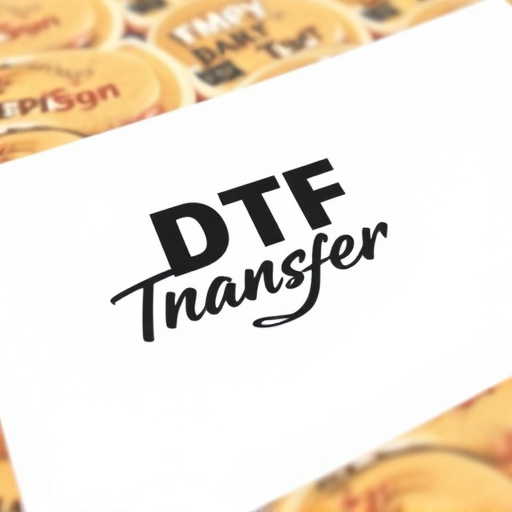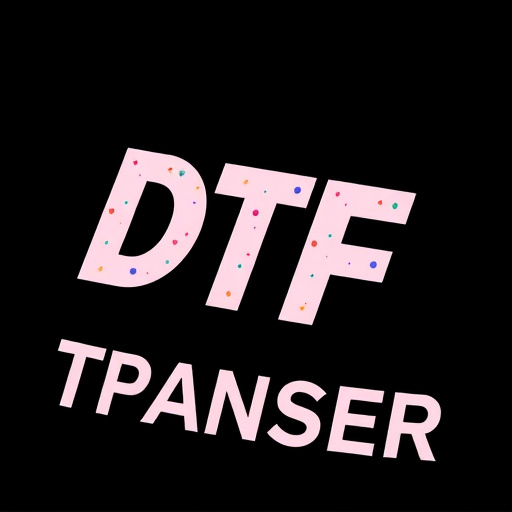Direct-to-film (DTF) technology has revolutionized printing, allowing artists and designers to create vibrant, multi-colored designs with unmatched speed and accuracy. By skipping traditional intermediate steps, DTF offers high-resolution prints with exceptional clarity and durability, making it a preferred method across advertising, packaging, fashion, and interior design industries. Its ability to deliver unparalleled customization and unique visuals makes DTF a game-changer in creative applications, from decorative items to functional products. Future prospects include sustainable practices, advanced automation, and enhanced visual capabilities, promising to further transform the industry.
Discover the revolution in print technology with Direct-to-Film (DTF). This innovative process is transforming the way we create vibrant, multi-colored designs across diverse substrates. From eye-catching packaging to captivating signage, DTF printing delivers stunning visuals with unmatched precision and durability. Explore how this game-changing technology is disrupting industries, offering endless creative possibilities for modern graphics. Uncover the secrets behind its appeal and the future trends shaping the DTF landscape.
- Understanding Direct-to-Film Technology: A Brief Overview
- The Appeal of Multi-Colored Designs in Modern Graphics
- How DTF Enables Stunning Visuals on Various Substrates
- Applications and Industries Benefiting from Vibrant DTF Prints
- Ensuring Quality and Durability in Multi-Color DTF Printing
- Future Trends Shaping the World of DTF Technology
Understanding Direct-to-Film Technology: A Brief Overview
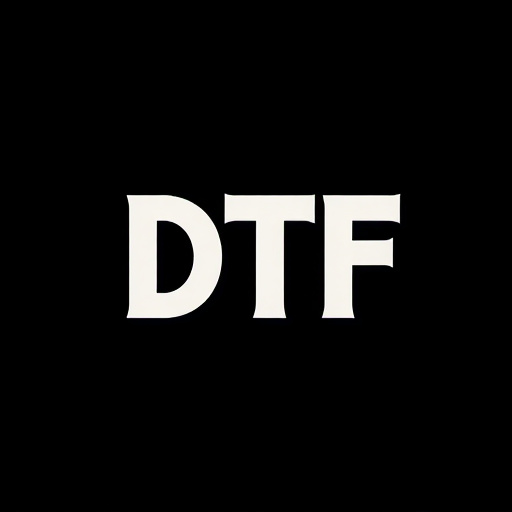
Direct-to-film (DTF) technology has revolutionized the printing industry, offering a dynamic and versatile approach to creating vibrant multi-colored designs. This innovative process eliminates the need for traditional intermediate steps, allowing artists and designers to bring their visions to life with stunning accuracy and speed. DTF enables direct application of ink onto film, ensuring a precise transfer of intricate details and rich color palettes.
By using advanced machines and specialized inks, DTF technology produces high-resolution prints with exceptional clarity and durability. This method is particularly popular in various sectors, from advertising and packaging to fashion and interior design, as it offers unparalleled customization and the ability to create unique, eye-catching visuals that capture attention and leave a lasting impression.
The Appeal of Multi-Colored Designs in Modern Graphics
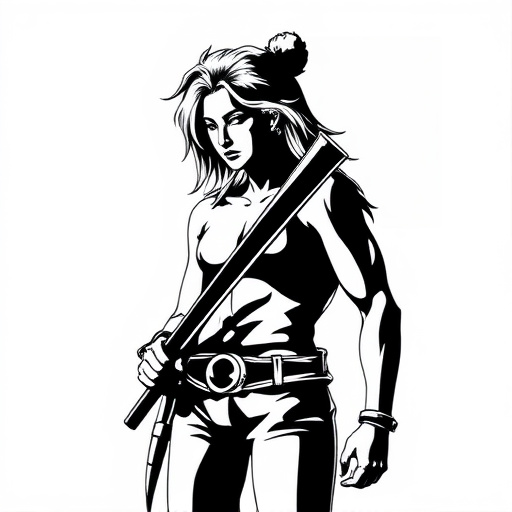
In the realm of modern graphics, vibrant multi-colored designs have captured the imagination of artists and audiences alike, thanks largely to advancements in direct-to-film (DTF) technology. This innovative approach allows for the creation of eye-popping visuals that were once limited by traditional printing methods. The appeal lies not only in the visual spectacle but also in the enhanced depth and texture that DTF brings to the creative process. Every hue, every shade, and every tint is rendered with remarkable precision, resulting in designs that seem almost tangible.
The use of multi-colored schemes in graphics has evolved from simple aesthetics into a powerful tool for communication. Whether it’s in advertising, branding, or digital art, DTF technology enables artists to convey complex emotions and narratives through color. The versatility of DTF allows for seamless transitions between hues, creating harmonious blends that capture the viewer’s attention and leave a lasting impression. This, combined with its ability to produce high-resolution details, makes multi-colored designs in modern graphics both visually stunning and highly effective.
How DTF Enables Stunning Visuals on Various Substrates
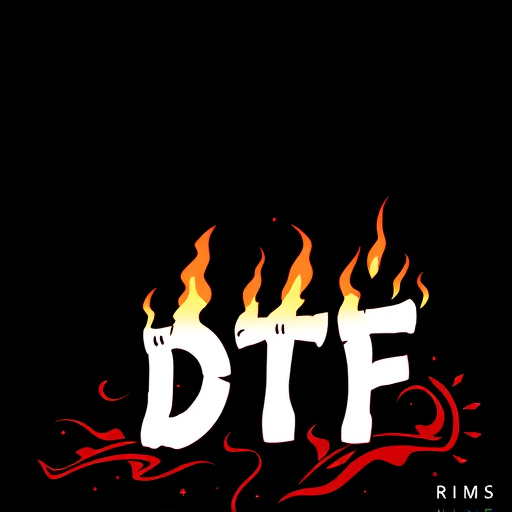
Direct-to-film (DTF) technology is a game-changer when it comes to creating vibrant, multi-colored designs on various substrates. Unlike traditional printing methods that often rely on complex setups and specific materials, DTF offers a straightforward and versatile approach. It allows for stunning visuals to be directly printed onto surfaces like glass, plastic, metal, and even fabric, opening up a world of creative possibilities.
With DTF, high-resolution images and intricate details can be achieved with ease. This technology uses advanced inkjet printers to apply pigmented inks directly onto the substrate, ensuring vibrant colors and sharp edges. Whether it’s for decorative purposes or functional applications, DTF enables businesses and designers to produce eye-catching, long-lasting prints that enhance any space or product, making it a popular choice in today’s visual-centric world.
Applications and Industries Benefiting from Vibrant DTF Prints
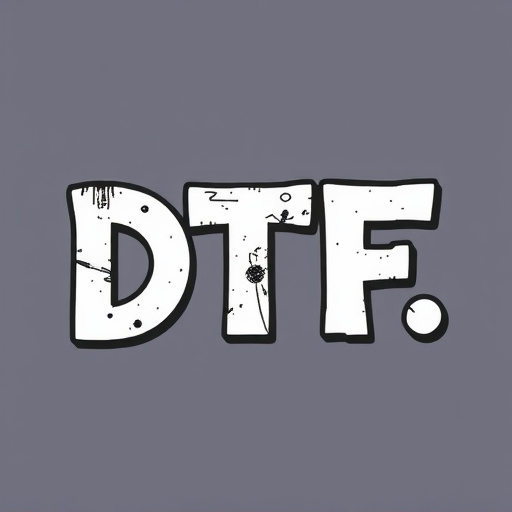
Vibrant multi-colored designs using direct-to-film (DTF) technology have found applications across various industries, revolutionizing the way products are personalized and marketed. From fashion and accessories to automotive and electronics, DTF prints offer a game-changer in visual communication. In the apparel sector, for instance, clothing brands are leveraging DTF to create bold, eye-catching patterns on textiles, enabling them to stand out in a crowded market. This technology allows for intricate designs with rich, accurate colors, appealing to both consumers and fashion designers alike.
In other industries, such as automotive and electronics, DTF prints enhance the aesthetic appeal of vehicle interiors and electronic devices. It enables the production of unique, customized patterns on components like car seats, steering wheels, and phone cases, adding a touch of personalization that resonates with modern consumers. Furthermore, DTF’s ability to produce high-quality, durable prints makes it suitable for outdoor signage, advertising banners, and packaging materials, ensuring vibrant visuals even under harsh environmental conditions.
Ensuring Quality and Durability in Multi-Color DTF Printing

When creating vibrant multi-colored designs with direct-to-film (DTF) technology, ensuring quality and durability is paramount. The precision and accuracy of DTF printing allow for intricate color blends and detailed graphics, but these fine lines can be sensitive to environmental factors like temperature and humidity. To safeguard against fading or chipping, manufacturers often employ protective coatings that enhance the print’s resistance to UV rays and weathering.
Additionally, choosing high-quality materials, such as durable films and vibrant inks, plays a crucial role in maintaining the print’s integrity over time. Regular cleaning and maintenance of printing equipment also contribute to consistent results, ensuring that each DTF print meets the expected standards of excellence and longevity.
Future Trends Shaping the World of DTF Technology
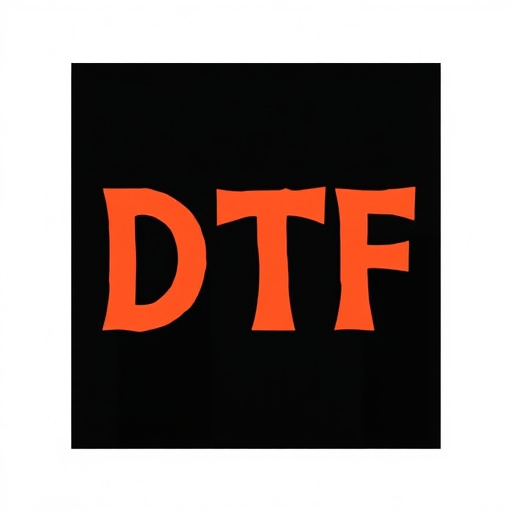
The future of direct-to-film (DTF) technology promises exciting innovations that will further revolutionize the printing industry. As demand for personalized, vibrant, and durable designs continues to grow, DTF is expected to evolve with advanced materials and printing techniques. One notable trend is the development of eco-friendly solutions, with researchers exploring sustainable inks and substrates, reducing the environmental impact without compromising on quality. Additionally, the integration of AI and machine learning algorithms could automate design processes, enabling dynamic customization and faster production times.
Another emerging trend focuses on enhancing color accuracy and resolution, pushing the boundaries of what’s possible in DTF printing. This pursuit of excellence aims to meet the ever-rising standards of visual appeal across various sectors, from packaging to apparel. Furthermore, the potential for DTF to transform packaging design by enabling unique, eye-catching labels and graphics is immense, capturing consumers’ attention in an increasingly competitive marketplace. These future trends indicate a bright and innovative path forward for DTF technology.








